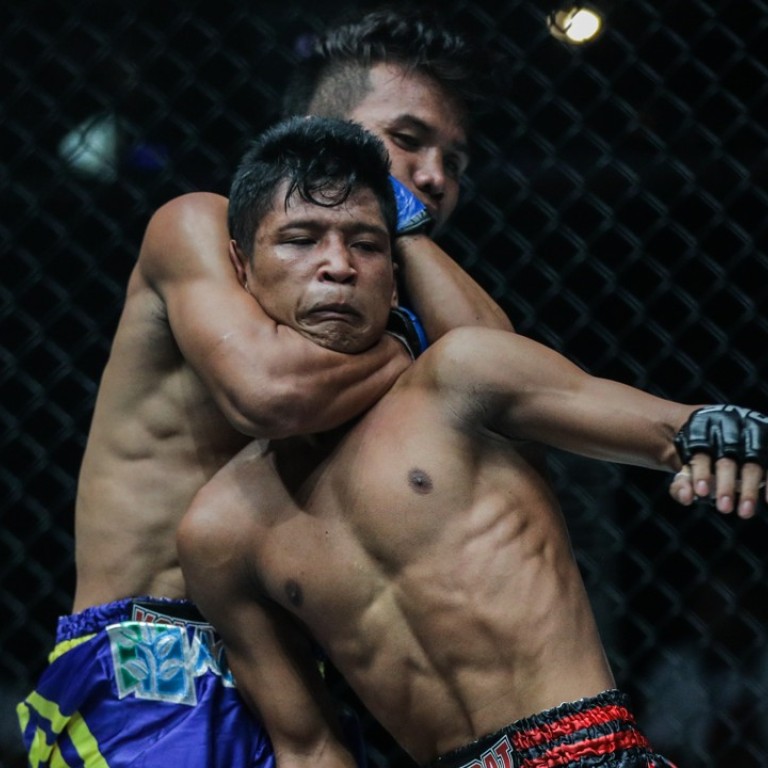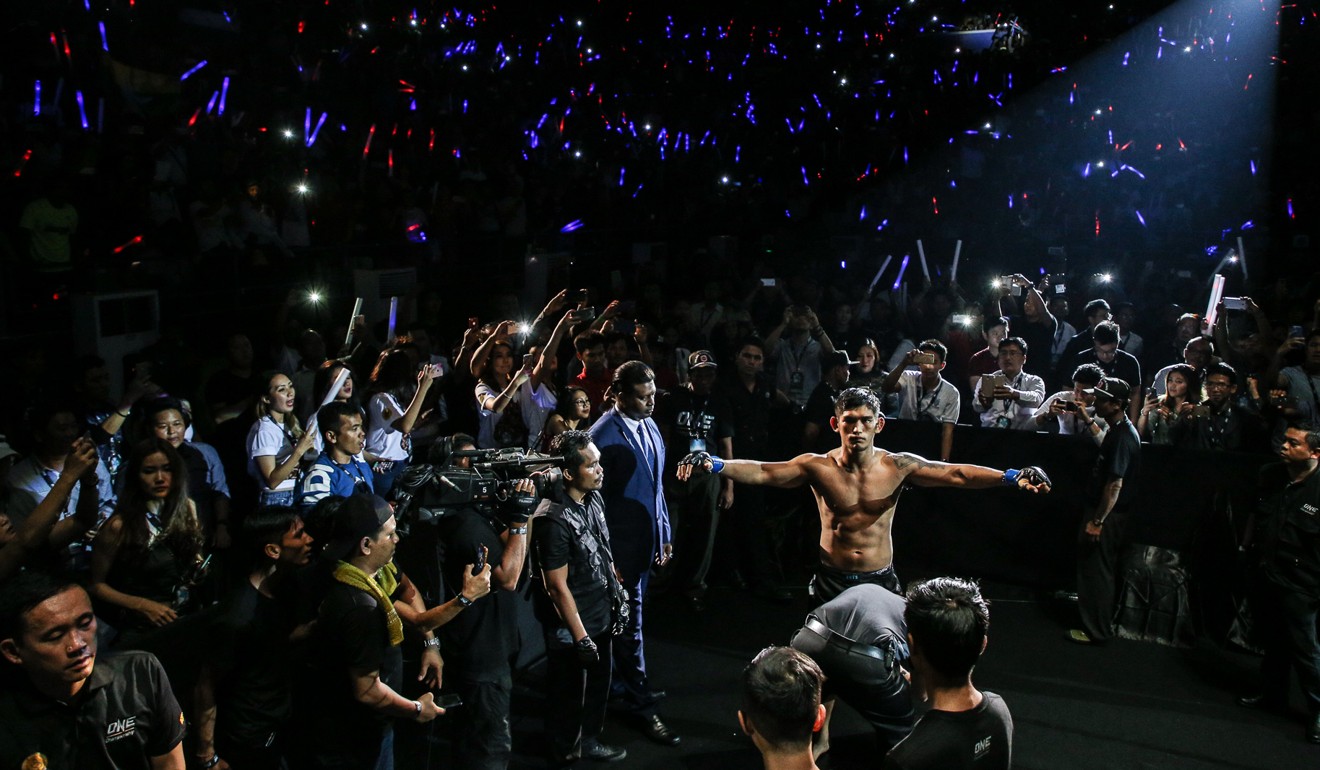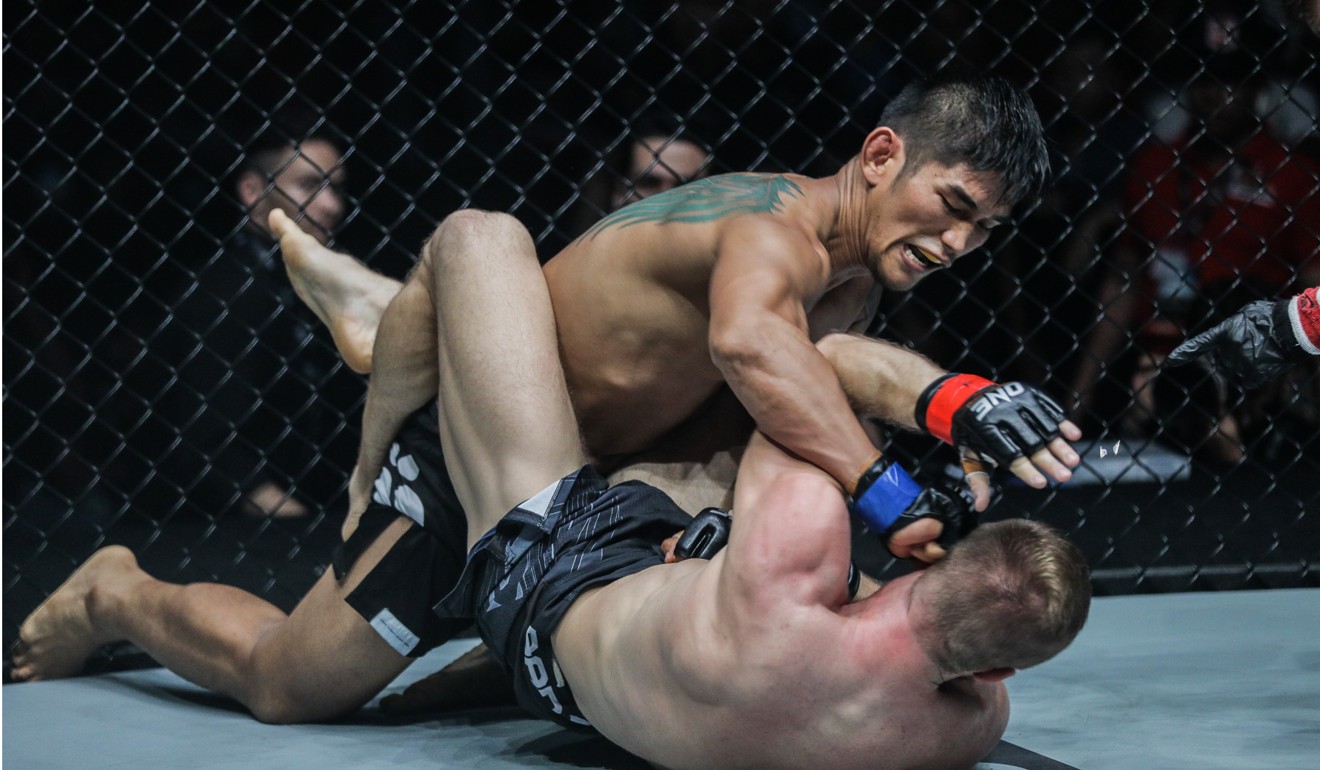
Lethal but legal lethwei laying the foundations for Myanmar’s MMA boom
Aung La Nsang’s One Championship middleweight world title win over Russian Vitaly Bigdash last month shines a light on a new generation of Burmese fighters
As a hero to millions in his homeland of Myanmar, Aung La Nsang chooses his words carefully and so it pays to reflect on a statement he made before fighting for the One Championship middleweight world title last month.
“I will become my country’s first world mixed martial arts champion,” said the 32-year-old. “But this will just be the beginning for fighters from Myanmar. The world had better watch out.”
Nsang duly went out and made sure the first part of that prediction became fact, showing both ferocity and courage in winning a unanimous decision over the previously unbeaten Russian Vitaly Bigdash in front of a delirious crowd at Yangon’s Thuwunna Indoor Stadium.
History was sealed, and Nsang says it now also beckons for a generation of Burmese fighters he predicts will descend on MMA having hardened up already through years learning and competing in the traditional combat sport of lethwei.
“In Myanmar, every boy grows up loving to fight,” said Nsang. “Everybody in our country loves lethwei. When I was a boy I loved it, even though I never really learned it. I would watch the fights with friends and family every week. Fighting is just in our nature. Many of these fighters, if they chose to come to MMA, they are already experienced. Very experienced.”

For many in the fight game – and beyond – traditional lethwei is the toughest sport there is, thanks to the fact that its bareknuckle stand-up bouts allow feet, hands, knees, elbows and heads to be used, and are only ever decided by knockout or if a fighter simply cannot finish. Otherwise the fight is declared a draw. And – as Nsang pointed out – the martial art produces finely tuned fighters.
Lethwei’s history dates back centuries, but its skills have up until recently been pretty much kept within the borders of a country that had spent decades closed up under the rule under a military dictatorship.
Myanmar hails a hero as MMA fighter Aung La Nsang is crowned world champion – believed to be the nation’s first in any mainstream sport
As Myanmar opens its doors to the world, that’s all changing, as evidenced by the emergence of a number of professional lethwei organisations, and by the fact that rise of MMA – globally – has given Burmese martial artists another platform on which to both test their skills, and make hitherto unheard of money.
Hence the Light of a Nation card in Yangon featured a exhibition lethwei bout, but also a number of Burmese fighters who had already fought their way through the local lethwei ranks.

Tha Pyay Nyo took his record in MMA to 4-0 with a spectacular 16-second knockout of Htet Aung Oo, and came to One having already built up a record of more than 100 wins in lethwei.
There was victory too for one-time junior lethwei prospect, Saw Min Min, in the event’s Myanmar flyweight tournament, with the 18-year-old bringing to MMA a lethwei record of 6-0-3, and an impressive pedigree being the son of the famed lethwei fighter Pyone Pyone Lay.
Confident, well prepared... and sharing the same gym as the Chechen president, Bigdash out to spoil the Burmese party
The One Championship group is supporting the rise of the World Lethwei Championship (WLC), formed last year with rules designed to make the sport more appealing to an international audience not used to the full-on – and let’s face it, often brutal – action.
Among the differences from traditional lethwei rules are no provision for injury breaks, and a points system which means bouts can be decided by judges.
Win Zin Oo has operated the Thut Ti (Courage) Lethwei Club on the outskirts of Yangon since 1982, returning to the martial art he was obsessed with as a child after years as a civil engineer.
Increasingly, Oo said, his gym has been fielding calls from foreigners looking to come and learn some lethwei during their trips to Yangon – even if that might just be one training session – while he sees a general change in how the martial art is being viewed within Myanmar, too.
I want to reach my goals: meet ‘The Burmese Python’ hoping to become his country’s first MMA champion
“Lethwei has become more popular with professionals where once it was seen as a something for farmers or the poor,” said Oo. “Lethwei has a very robust training system and of course you can become a very good fighter indeed. It is great for your mind as well as your body and people can see the benefits quickly.”
While Oo and his team concentrate on teaching only traditional lethwei, he said the rise of MMA organisations such as the Singapore-based One Championship, which hosts events across the region, was offering obvious incentives to some local lethwei fighters.

“You can’t escape the fact that the money is very good, like a year’s salary for some of these fighters,” said Oo. “Also, they are very tough. Lethwei makes you very tough. MMA is a real option for some fighters and when they do switch over they are also super tough.”
But interest is flowing in an opposite direction, too, according to Dave Leduc, the Myanmar Lethwei World Championships title-holder and founder of the Nomad Lethwei management and promotions.
In safe hands: US$1 billion IPO-seeking One Championship founder Chatri Sityodtong plays down safety fears
The Phuket-based Canadian has carved his way to the top of the traditional-rules lethwei ranks, as well as playing a starring role as the sport has been showcased in Japan.
Leduc said he had been approached by seasoned MMA fighters to train, and fight, in lethwei, among them American Joe Ray, winner of the headline event at last week’s Full Metal Dojo event in Bangkok.

The hope for Leduc, though, is that while MMA is an option, lethwei fighters will remain true to the traditions of the martial art, no matter what is on offer elsewhere.
“Every day I get messages from people wanting lethwei fights,” Leduc said. “Lethwei has never been more popular. Yes, MMA is loved for sure [and WLC] did those [lethwei] modifications to attract more people, or make it more acceptable, because otherwise it’s very savage. But it’s sad because potentially they are destroying or watering down a centuries-old sport, where the man that wants it the most wins.”

